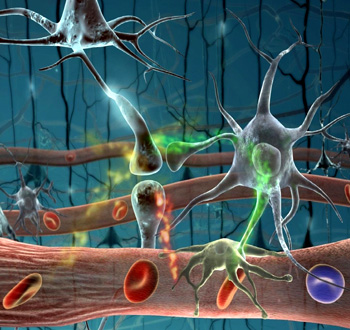 The main function of PNS is to relay information from brain to spinal cord and to rest of the body parts and vice versa.
All the nerves and nerve cells that exists outside the central nervous system together form the peripheral nervous system(PNS).
The main function of PNS is to relay information from brain to spinal cord and to rest of the body parts and vice versa.
All the nerves and nerve cells that exists outside the central nervous system together form the peripheral nervous system(PNS). All the nerves and nerve cells that exists outside the central nervous system together form the peripheral nervous system(PNS).
The main function of PNS is to relay information from brain to spinal cord and to rest of the body parts and vice versa. PNS contains 12 pairs of cranial nerves and 31 pairs of spinal nerves. These cranial nerves dawns from the brain and mainly assists the head and neck parts. Whereas spinal nerves branch off from spinal cord and supply to the rest of the body. Most of the cranial nerves and all of the spinal nerves contain axons of both sensory and motor neurons.
The PNS is functionally divided into two constituents: The somatic nervous system and the autonomic nervous system. Somatic nervous system controls the skeletal muscle in response to external stimuli and also regulates the external sensory organs such as the skin. But much of the skeletal muscle activity is genuinely controlled by reflexes mediated by the spinal cord or a part of the brain called the brainstem. The somatic nervous system consists of cranial nerves and spinal nerves. Voluntary actions are said to be disciplined deliberately by this somatic nervous system. The autonomic nervous system consists of sensory and motor neurons that bound across the central nervous system and through various internal organs. It is responsible for supervising conditions in the internal environment by controlling the involuntary muscles, such as smooth and cardiac muscle and bringing about appropriate changes in them. This system can further be divided into the parasympathetic, sympathetic and enteric divisions.